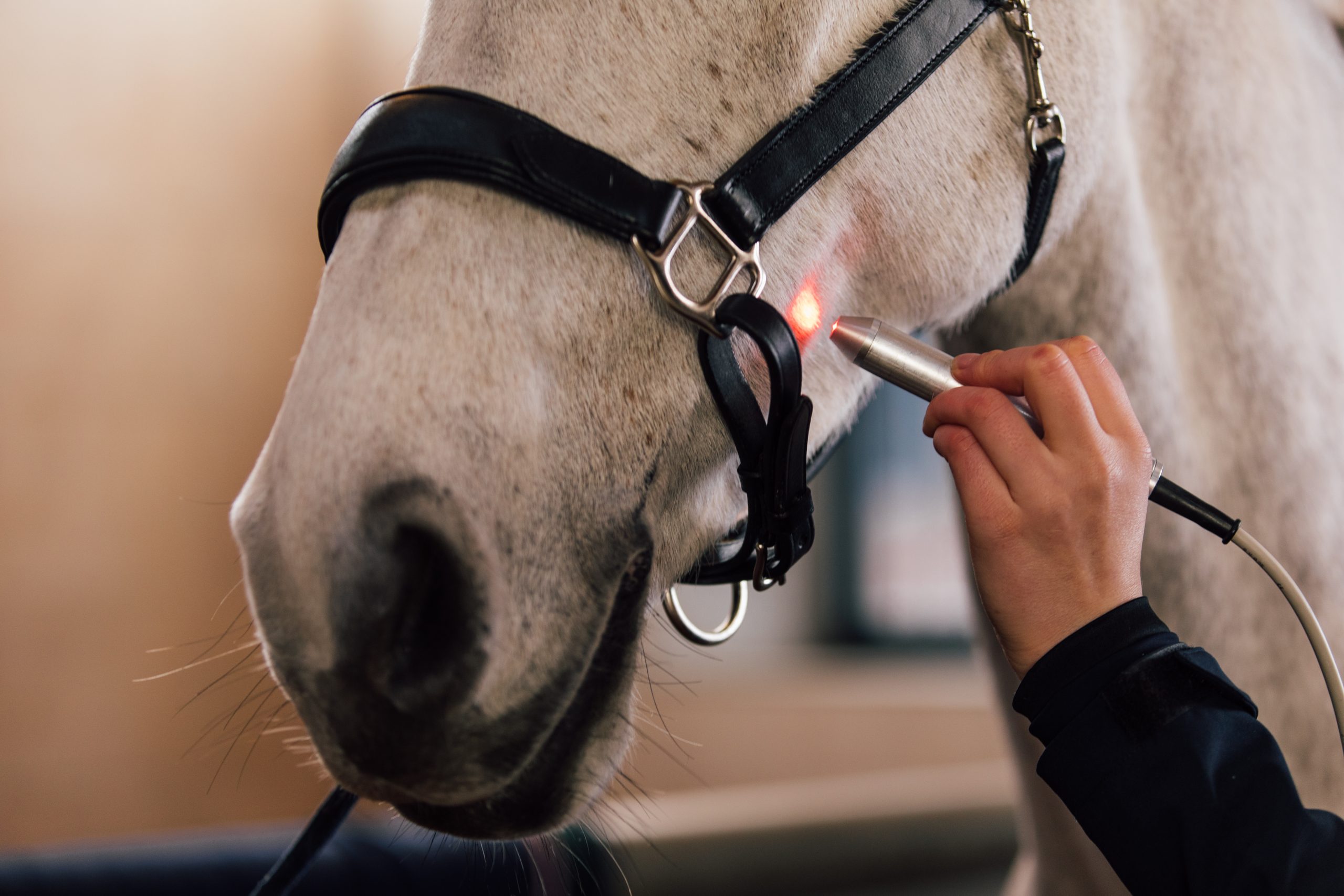Equine Therapy for Kid: Emotional and Behavioral Assistance Explained
Wiki Article
Reviewing the Efficiency of Laser Therapy in Horse Treatment for Injury Rehabilitation
The examination of laser treatment's performance in equine injury rehab pivots on multiple variables, including healing time, discomfort reduction, and cells regeneration. Veterinarians often observe remarkable end results with laser therapy compared to standard methods, positioning it as a critical component in equine treatment. Equine Therapy.
Recognizing Laser Therapy
Laser treatment has come to be a pivotal tool in vet medication, particularly in the treatment of equine problems. Known for its non-invasive nature and effectiveness, laser therapy involves the application of particular wavelengths of light to boost cells repair service and reduce inflammation. This restorative modality is significantly preferred for its ability to increase the recovery procedure in horses enduring from a range of bone and joint injuries and chronic conditions.The key device behind laser treatment is its capacity to enhance cellular features. In addition, laser treatment promotes vasodilation, enhancing blood flow and oxygen delivery to broken cells, hence speeding up recovery.
In equine medication, laser treatment is especially beneficial for problems such as tendonitis, osteo arthritis, and wound recovery. The strategy is admired for its pain-relieving homes, enabling equines to restore wheelchair and function much more rapidly. Veterinarians additionally value its minimal negative effects compared to other treatment techniques, making it a trustworthy and risk-free choice for equine care.
How Laser Therapy Works
To understand just how laser treatment functions, it is important to delve right into the communication between light energy and biological tissues. Laser therapy, also referred to as Low-Level Laser Therapy (LLLT) or photobiomodulation, uses certain wavelengths of light to pass through tissues and promote cellular procedures. The mechanism rests on the absorption of photons by cell chromophores, largely within the mitochondria, which are essential for power production.Upon absorption, these photons trigger a collection of biochemical changes, enhancing mitochondrial feature and leading to raised adenosine triphosphate (ATP) production. This increase in ATP increases mobile metabolic rate, advertising cells repair and regeneration. Furthermore, laser treatment modulates inflammatory actions by impacting cytokine degrees and lowering oxidative stress, thereby alleviating discomfort and swelling.
Another substantial facet of laser treatment is its duty in enhancing microcirculation. The treatment advertises vasodilation, boosting blood circulation and oxygen delivery to damaged cells. This facilitates the elimination of mobile particles and sustains the spreading of fibroblasts and collagen synthesis, vital for injury recovery.
Medical Evidence
The efficiency of laser treatment in equine therapy has actually been validated through various professional research studies, showcasing its healing potential throughout an array of conditions. A research conducted by Turner et al. (2012) demonstrated that horses treated with low-level laser treatment (LLLT) for ligament injuries showed increased recovery contrasted to those getting traditional treatments.Likewise, research by Johnson and associates (2015) focused on equine muscle mass injuries, disclosing that laser therapy significantly quickened muscle fiber regeneration and lowered muscle rigidity. Medical assessments have revealed that laser treatment can reduce persistent problems such as osteo arthritis.
Veterinarian Insights
Vet professionals have increasingly acknowledged the worth of laser treatment in equine treatment, mentioning both empirical evidence wikipedia reference and direct experience. Dr. Jane Smith, a leading equine veterinarian, notes that laser treatment has actually revealed amazing efficacy in lowering swelling and speeding up cells fixing. "In my method, I have actually observed much faster recuperation times in equines treated with laser therapy contrasted to traditional methods," she states. This belief is resembled by Dr. John Doe, that stresses that laser treatment supplies a non-invasive alternative with very little negative effects, making it particularly fit for equine patients.Veterinarians also appreciate the flexibility of laser therapy. It can be utilized for a large range of conditions, this article from surface wounds to much deeper bone and joint injuries. Dr. Emily Brown highlights its utility in treating problems like tendonitis and osteoarthritis, where standard treatments typically fail. She directs out that laser therapy can be tailored to the certain needs of each horse, ensuring optimal outcomes.

Practical Factors To Consider
A key element of applying laser therapy in equine therapy entails understanding the functional factors to consider that guarantee its effectiveness and safety and security. It is essential to choose the appropriate laser gadget, as numerous kinds differ in wavelength, power, and infiltration deepness (Equine Therapy). Veterinarians should be fluent in these specifications to tailor therapy protocols effectively per injury kindIn addition, the regularity and duration of laser therapy sessions need mindful preparation to optimize healing benefits while lessening any possible negative impacts. Regular surveillance of the horse's action to treatment can lead necessary modifications important link in the therapy routine. Developing a safe and regulated atmosphere during treatments is likewise vital to avoid unexpected direct exposure to laser exhausts, which could hurt both the equine and the trainer.
Training and qualification of workers carrying out laser therapy are vital to make certain appropriate method and to copyright safety standards. Furthermore, maintaining accurate records of each session, including laser setups and observed outcomes, is essential for evaluating the general efficiency of the therapy and for making data-driven choices.
Final Thought
Laser treatment has arised as an effective modality in equine injury rehabilitation, providing considerable advantages in healing time, discomfort alleviation, and cells recovery. For optimal outcomes, continual surveillance and customized therapy methods continue to be essential in leveraging the complete possibility of laser therapy in equine care.Report this wiki page